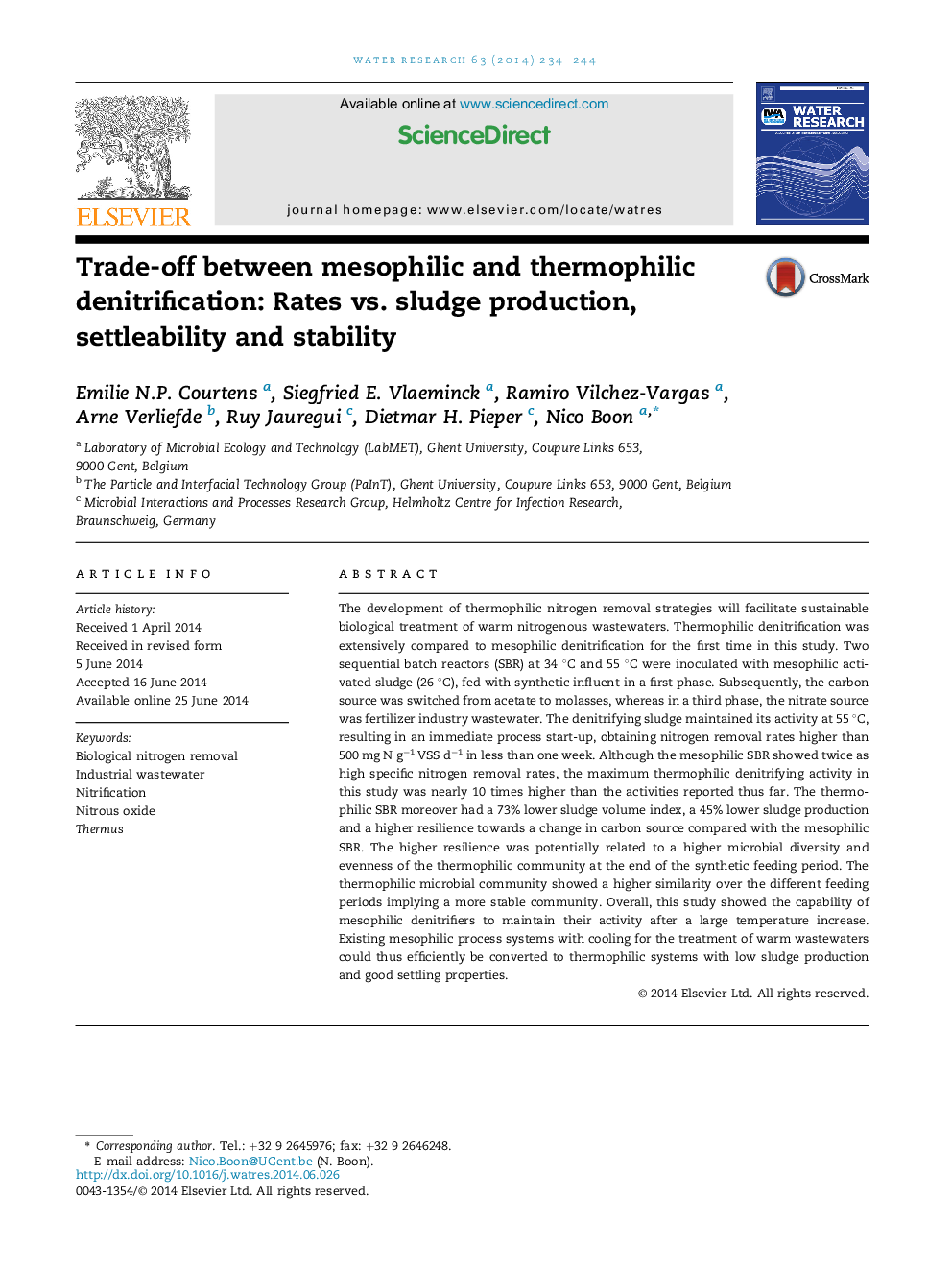| Article ID | Journal | Published Year | Pages | File Type |
|---|---|---|---|---|
| 4481476 | Water Research | 2014 | 11 Pages |
•Immediate start-up of a thermophilic denitrifying SBR (55 °C) with mesophilic sludge.•The mesophilic control SBR showed double specific nitrogen removal rates.•The specific thermophilic denitrifying rates were 8.5 higher than reported so far.•The thermophilic sludge showed a 73% lower SVI and a 45% lower sludge production.•The thermophilic community showed a more stable community over time.
The development of thermophilic nitrogen removal strategies will facilitate sustainable biological treatment of warm nitrogenous wastewaters. Thermophilic denitrification was extensively compared to mesophilic denitrification for the first time in this study. Two sequential batch reactors (SBR) at 34 °C and 55 °C were inoculated with mesophilic activated sludge (26 °C), fed with synthetic influent in a first phase. Subsequently, the carbon source was switched from acetate to molasses, whereas in a third phase, the nitrate source was fertilizer industry wastewater. The denitrifying sludge maintained its activity at 55 °C, resulting in an immediate process start-up, obtaining nitrogen removal rates higher than 500 mg N g−1 VSS d−1 in less than one week. Although the mesophilic SBR showed twice as high specific nitrogen removal rates, the maximum thermophilic denitrifying activity in this study was nearly 10 times higher than the activities reported thus far. The thermophilic SBR moreover had a 73% lower sludge volume index, a 45% lower sludge production and a higher resilience towards a change in carbon source compared with the mesophilic SBR. The higher resilience was potentially related to a higher microbial diversity and evenness of the thermophilic community at the end of the synthetic feeding period. The thermophilic microbial community showed a higher similarity over the different feeding periods implying a more stable community. Overall, this study showed the capability of mesophilic denitrifiers to maintain their activity after a large temperature increase. Existing mesophilic process systems with cooling for the treatment of warm wastewaters could thus efficiently be converted to thermophilic systems with low sludge production and good settling properties.
Graphical abstractFigure optionsDownload full-size imageDownload high-quality image (169 K)Download as PowerPoint slide
